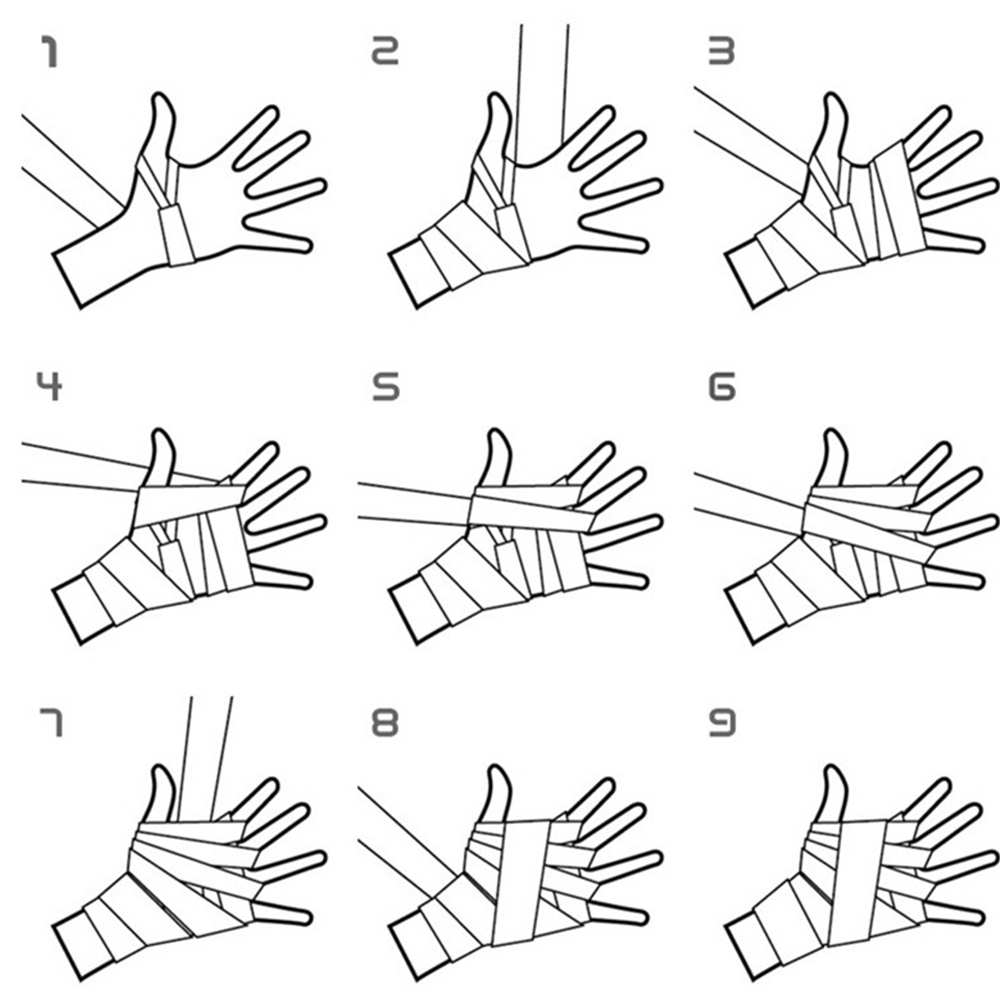
A few years ago, I bought my heavy bag and a pair of boxing gloves for punching it. I was so happy, and I started hitting it as soon as I hung it up. With full power! I felt as if I were going to be the next world champion. 🙂 But after a minute or two, my knuckles, wrists, the upper part of my hand, and fingers were hurting terribly. Then, I realized that I forgot to buy essential equipment for heavy bag training, the boxing hand wraps. So, I ran out and bought two, and I wrapped my hands on my way. I mean, I did not follow any tutorial on how to wrap hands for boxing.
So, I put more cloth wraps on the areas where it hurt, my knuckles and wrist joint. But, after hitting the bag for a few seconds, they loosened, and I felt they did not protect my hands the way they should be. So, I tried it again and again and, well, again. But none of them worked.
I tell you my story to help you understand that hand-wrapping is not just about putting boxing wraps here and there. It is a technique that every fighter should learn (proper hand protection).
[content-egg module=Amazon products=”us-B017V08A80″ template=list_no_price]
How to put boxing wraps on the right way
From my experience, and also suggested by experts, this is the best way to bandage. This method is perfect for any training and martial arts. It is the most used hand-wrapping technique that boxers, MMA, Muay Thai fighters use. It is comfortable and supports your knuckles and wrists.
Watch the video below to learn how to wrap hands with this technique.
Here are the steps on how to wrap the wrist for boxing.
- Begin with the thumb loop and start covering throughout the back of the wrist.
- Go beneath the wrist 3 times.
- After that, circle throughout the wrist and next cover the thumb to safeguard the joint once more around the wrist.
- Go in between each finger, beginning with the little finger, then ring finger and go back towards the pointer finger. Place the tape carefully on your palm to create a good base. (particularly on your pinky)
- Go up towards the knuckles over the back of the hand. Cover the knuckle area 2-3 layers to protect the top of your fists.
- End by creating an X on the hand’s back while you go down again to the wrist.
- Finish by covering throughout the wrist and locking down. Tighten the wrap with the Velcro to avoid loosening.
Note: It is not uncommon for some professional fighters to put a little extra padding around their middle finger.

Why wrapping your hands is so essential in boxing training?
It protects your hand from injuries. If you are a fighter, your hands are your most valuable weapon. There are hundreds of talented boxers out there who had to finish their career because of severe hand injuries.
Beginners think we need to wrap the hands to protect the knuckles or provide extra cushion. In a word, to make the punches less painful. But, wrapping has a function that is much more important than that.
Your hands are made up of many small bones and joints that can easily suffer an injury while you punch the bag, even if those hits are not so powerful. A hand wrap is a great way to protect your moveable bones as well as loose joints.

The wrap aims to hold those small joints and moveable bones together, supporting all parts of your hand. It keeps your hand as a whole, not letting those small bones move freely when your fist land on the bag or your opponent. Thanks to the fastened joints, the shock is spread across your entire hand.
But, the maximum support can only happen if you wrap your hands correctly. If it is badly-done, you do almost nothing.
One more thing. Even if you use heavy bag hand wraps, using gloves is vital for full protection. Your gloves are for cushioning the impact while wraps are for keeping your hand joints and bones together. Hence, both of them should be used while you work out.
Tip: If you have small hands or purchase boxing gloves that are a bit large for your hands, you can fill up space using longer wraps. For shadow boxing, speed, or double-end training, use shorter wraps that let your hands be looser.
Protect your hands: Best gloves for heavy bag
What are the best punching bag hand wraps?
The first thing you should keep in mind is the length of the wrap. For people with bigger hand size, the length should be about 180 inches. That is enough to cover the hand completely and safely. In case you have smaller hands, and for girls, a 120 inches wrap might do. But, the best is if you try before buying.
Another crucial feature is the material. The standard wraps are semi-elastic, providing the most comfortable, safe, and durable usage. I tried hand wrap gloves as well, but they are good for nothing.
What makes cotton wraps my favorite? Unlike synthetic fabrics, cotton material is very breathable and dries very quickly, preventing sweat and odor accumulation. Cotton fabric is very comfortable against your skin and gives good compression. Machine washability makes caring for the wraps a breeze.
The wrap should be comfortable for you. Do not make it too tight or too loose. However, it depends on you. If you want to land more powerful punches on the heavy bag, it is better to make it a bit more tight form for extra protection.
If you want to hit a heavy punching bag, you may want to add more cover to the wrists. But keep in mind that, if your wrists are thickly protected, it will be harder to throw uppercuts and crosses with full force.
[content-egg module=Amazon products=”us-B008SSBVVI” template=list_no_price]
FAQ
Can I use handwrap gloves instead?
The problem is that those types of gloves don’t provide such firm support as a tight wrap. Hence, the protection isn’t as effective if you use these quick wraps. They are suitable for double-end or speed bag workouts. But for a heavy bag workout, I don’t recommend using these gloves because it gives less security. Plus, wrapping gives a more solid fist.
Do I need to wrap my hands differently for other combat sports?
For Muay That and kickboxing, this is an acceptable wrapping method. For MMA, because of grappling, we may need to make a wrap that isn’t so tight to catch the opponent. Here is the tutorial.